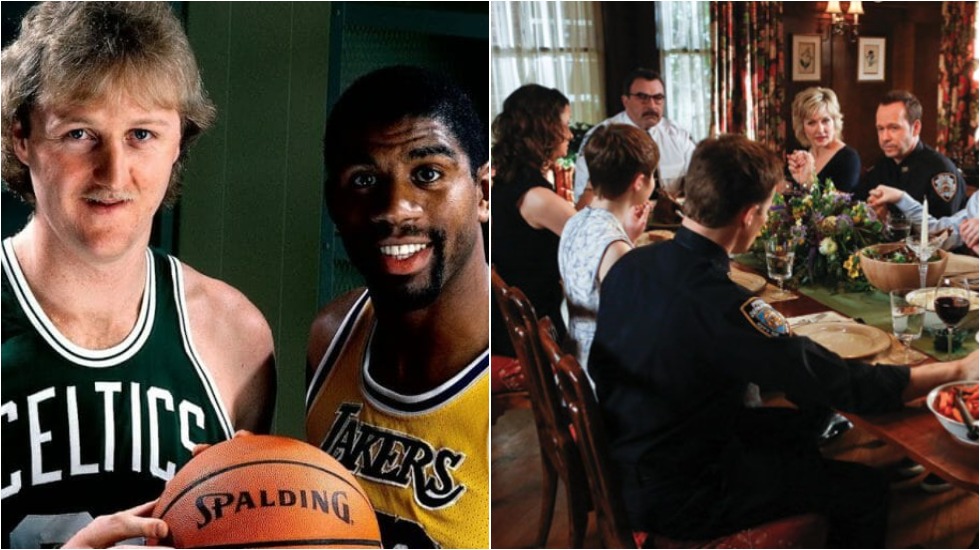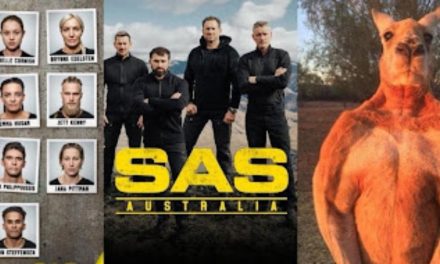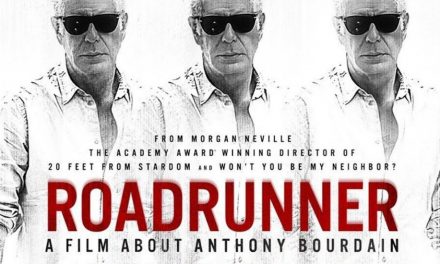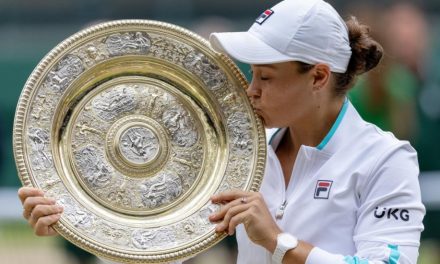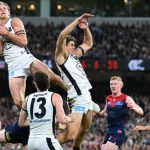NBA stars Larry Bird and Magic Johnson (left), and the Reagans during one of “those” Sunday dinners. Photos: ESPN/CBS
My limited knowledge of American NBA begins in the early 1980s. Channel 7 screens games in the witching hour, following the late Thursday night football show, “League Teams”.
Initially, I’m annoyed, as premiere episodes of “Dallas” spin-off, “Knots Landing”, have had to make way for this overseas sport.
The names of the players are easy to remember. It’s the era of Kareem, Dr. J, Larry, Isaiah, Magic and Moses, and Lakers’ head coach Pat Riley’s Armani suits and greased-back hair.
I choose to follow Milwaukee. Their mascot is a buck with a giant B on its sweater. It reminds me of Bullwinkle J. Moose, appealing to my cartoon-centric brain. I’m lucky to see the Bucks once a year. It’s nearly always a combination of the 76ers, Celtics, Knicks and Lakers.
So the oft-repeated 2017 instalment of ESPN’s “30 for 30” documentary series, “Celtics/Lakers: Best of Enemies”, immediately grabs me by the nostalgic televisual and sporting neck.
A three-part five-hour epic, it captures the 1960s-1980s rivalry between the two teams, and the Lakers’ attempts to finally defeat the Celtics in a NBA Finals series.
It’s Lakers’ “Showtime” image versus Boston blue collar, is unafraid to touch on the topic of race in sport, and culminates in the Larry Bird-Magic Johnson playoff games of the 1980s.
The wild card is its choice of narrators, going for two fans who lived their teenage years at the height of the rivalry. South Central Los Angeles’ Ice Cube represents the Lakers, and mouthy Dorchester-raised Donnie Wahlberg the Celtics.
Wahlberg’s post-New Kids on the Block boy band television career has always intrigued me. For more than 10 years, he has played New York City detective, Danny Reagan, in the police drama “Blue Bloods”. Does he crave the cred that rappers-turned-mainstream-television-actors Ice T and LL Cool J still have?
“Blue Bloods” is a show that seems to be there every time you turn the television on. It haunts the late weeknight slot on Channel 10, usually a Thursday or Friday. It lurks again on Saturday, when they will repeat the same episode.
On pay TV, “Blue Bloods” is embedded on Fox One in constant rotation. There are two episodes daily. When season one finishes, it might cut to season five. Season eight can morph back into series one.
“Blue Bloods” is a police procedural drama series about four generations of an Irish Catholic family, the Reagans.
My first impression of the show was wondering if Tom Selleck as Frank, the NYC Police Commissioner, did anything but emit heavy sighs when confronted by another crisis.
His father, Henry, is retired, but is the former NYC Police Commissioner. Wahlberg is the eldest son. Daughter Erin is the assistant District Attorney. Youngest son Jamie was a Harvard graduate lawyer, but gave it up to become a uniformed cop.
PLEASE HELP US CONTINUE TO THRIVE BY BECOMING AN OFFICIAL FOOTYOLOGY PATRON. JUST CLICK THIS LINK.
There’s another son that was a detective, but he was murdered by corrupt cops. His previously unknown long-lost son has appeared in the second-to-last season. Yes, of course he’s a detective. Apparently, it’s in the genes, whether or not you’re aware of your bloodline.
Sometimes a show’s appeal can be its predictability.
If there’s a crime, usually a murder, it inevitably lands on Danny’s desk. It might be in Manhattan, the Bronx, Queens or Brooklyn – he still catches it. Staten Island appears to be out of his jurisdiction.
Inevitably, his hotheadedness (he did many tours of Fallujah), will bring him into conflict with his sister, who also, yes, inevitably, has been assigned to prosecute the case. Jamie and his uniformed partner, Eddie (who Jamie later marries), will, yes, inevitably, be on scene to help apprehend the perps.
The other key to the show is when all generations gather for the Sunday family dinner at chez Reagan.
Here, any ethical issues involving current cases will be discussed and thrashed out after saying grace. Danny will cynically dismiss Jamie by referring to him as “Harvard”. Any younger members of the clan exhibiting “subversive” tendencies will agreeably be shown the error of their ways and acknowledge it’s the cops who aren’t the bad guys after all.
I have stopped fighting this omnipresent beast, and given myself over to drinking “Blue Bloods” brand Kool-Aid. My favourite character is Erin’s sidekick, Anthony Abetemarco (played by Steve Schirripa, Bobby Baccalieri in “The Sopranos”).
He’s the classic wise guy with a heart of gold, who always eats pizza at his desk for lunch. I’m totally aware it’s cliche all the way.
“Blue Bloods” probably does pander to its huge, predominantly elderly, Friday night audience in the US. Maybe I have come to bury “Blue Bloods”, not praise it.
Plenty can ignore the show sailing mightily close to the wind with its sloppy (or deliberate?) characterisation, more often than not racially and ethnically profiling and stereotyping firebrand preachers, criminals and gang members.
So what’s keeping me going with this show? The recent cameos by musicians Lyle Lovett and Eric B as detectives? Trying to pick Donnie Wahlberg name-dropping New Kids on the Block song titles and lyrics into the script?
It might be the random appearance of a “liberal” teacher that is questioning, and editorialising on, the NYC stop-and-frisk policy. Be quick and you’ll notice the Che Guevara poster prominently displayed in the background of their classroom.
Enter stage left, Whoopi Goldberg, as the Speaker of the NYC Council, Regina Thomas. The latest season opens with Thomas raising the issue of defunding the police. Will Commissioner Frank choose a progressive path, or just exhale at the thought of another liberal do-gooder?
To Be Continued…
*”30 for 30″ documentaries appear regularly on ESPN. “Blue Bloods” can be seen on Ten, and daily on FOX One

